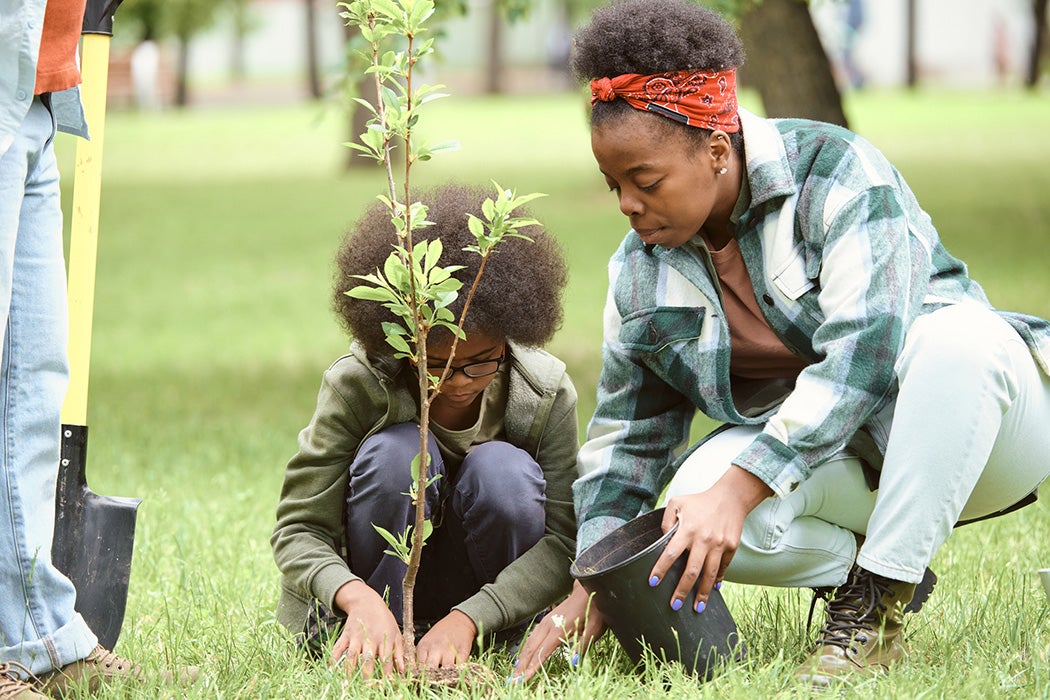In 2022, the presidents of New York City’s five boroughs unanimously lobbied Mayor Eric Adams to plant a million new trees by 2030, living up to similar commitments by the city’s prior two mayors. “It seems like trees are universally liked,” Antonio Reynoso, the Brooklyn borough president, told The New York Times. Tree planting is far from a global panacea for our various social and ecological ills—especially in ecosystems not natively suited to host trees or forests—but their positive impact in urban environments is well-documented. NYC Parks estimates the quantifiable benefits of street trees at over $127 million annually, including absorbing a billion gallons of stormwater and removing 1.5 million pounds of air pollutants each year.
Investment in urban green space has been on the rise in the years following the COVID-19 outbreak and as climate change is experienced more acutely in metropoles, but it’s also far from new. Michael Bloomberg may have spearheaded the twenty-first-century million-tree-planting initiative for the Big Apple, but trees were being intentionally planted in tenements as early as the turn of the twentieth century. And, as landscape historian Sonja Dümpelmann recounts, street trees were very intentionally cultivated in Brooklyn’s Bedford-Stuyvesant neighborhood in the tumultuous 1970s to build community and morale.
Dümpelmann traces the movement to Hattie Carthan, an older Black resident of of Bed-Stuy in the 1970s. Beginning in 1964, the first year of civil rights riots in the neighborhood, Carthan and seven neighbors formed a block association that largely focused on planting trees, beginning with just enough funds raised to plant four trees. This focus, according to Dümpelmann, was in response to Carthan’s observation that the streets of Bed-Stuy “had turned from safe, tree-lined havens into rat-infested slums littered with trash.”
By 1966—just two years later—the Department of Parks and Recreation had agreed to implement a tree-matching program with the association: for every four trees planted by the block association, another six would be planted by the city. Consequently, by 1970, there were nearly 100 block associations and more than 1,500 trees of resilient urban varieties had been planted. The next year, Carthan and her peers formed the Neighborhood Tree Corps with funding from the state’s Council on the Arts. The Corps included up to thirty children who attended classes on nature, tree tending, and gardening, and who received a small stipend for tending the community’s street trees.
As Dümpelmann puts it, “Carthan’s project was tangible and direct, and it was started by someone who actually lived in the spaces that were in need of attention and transformation.” Dümpelmann identifies the astuteness and success of the project on multiple fronts. First, tree planting had “immediate aesthetic and spatial impact.” They “filled the visual and phenomenological gap” between the so-called improvement and urban renewal efforts by the city government and the actual experience in the neighborhood.
Planting street trees also recognized the central role of the sidewalk as public space in the neighborhood, affirming that for residents “streets [were] not only pathways but a place that functioned as an extension of the indoors.” Because the plantings were carried out by the residents of the neighborhood, “tree planting [became] an act of community building” and “turned trees into a means of empowerment and emancipation within the civil rights movement.”
Dümpelmann acknowledges that there is an upper limit to the feelings of safety tree cover can provide to people of color. Studies in the 1980s showed that Black residents “often associated more densely vegetated areas with fears of physical danger” and incidents like that of birdwatcher Christian Cooper in Central Park in 2020 underscore that enjoyment of urban nature and public greenspace can be far from inclusive.
Weekly Newsletter
At the same time, studies attest that community tree planting “enhanc[e] a community’s and people’s individual sense of identity,” and street tree planting has a long history of enfranchising marginalized groups—even if in a limited way—dating back to village improvement societies in early New England.
The organization that Carthan and her peers eventually founded, the Magnolia Tree Earth Center, continues to advocate for environmental education and stewardship in Bed-Stuy today. Their efforts then and now, as Dümpelmann writes, “show that landscape, especially in times of crisis, […] can be a means and method of encouraging both public and private activism.”







